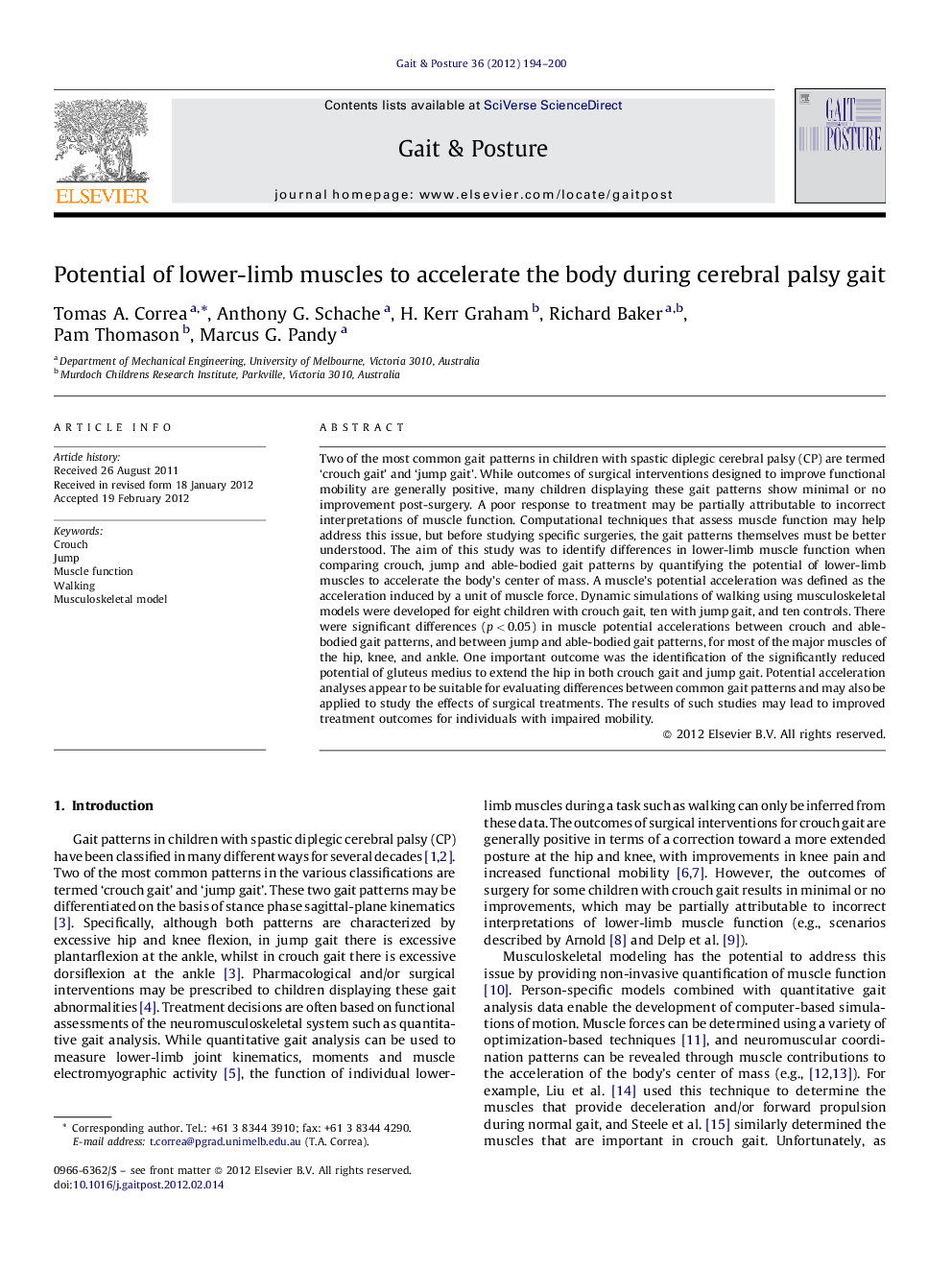| Article ID | Journal | Published Year | Pages | File Type |
|---|---|---|---|---|
| 6208043 | Gait & Posture | 2012 | 7 Pages |
Two of the most common gait patterns in children with spastic diplegic cerebral palsy (CP) are termed 'crouch gait' and 'jump gait'. While outcomes of surgical interventions designed to improve functional mobility are generally positive, many children displaying these gait patterns show minimal or no improvement post-surgery. A poor response to treatment may be partially attributable to incorrect interpretations of muscle function. Computational techniques that assess muscle function may help address this issue, but before studying specific surgeries, the gait patterns themselves must be better understood. The aim of this study was to identify differences in lower-limb muscle function when comparing crouch, jump and able-bodied gait patterns by quantifying the potential of lower-limb muscles to accelerate the body's center of mass. A muscle's potential acceleration was defined as the acceleration induced by a unit of muscle force. Dynamic simulations of walking using musculoskeletal models were developed for eight children with crouch gait, ten with jump gait, and ten controls. There were significant differences (p < 0.05) in muscle potential accelerations between crouch and able-bodied gait patterns, and between jump and able-bodied gait patterns, for most of the major muscles of the hip, knee, and ankle. One important outcome was the identification of the significantly reduced potential of gluteus medius to extend the hip in both crouch gait and jump gait. Potential acceleration analyses appear to be suitable for evaluating differences between common gait patterns and may also be applied to study the effects of surgical treatments. The results of such studies may lead to improved treatment outcomes for individuals with impaired mobility.
⺠This study evaluated lower-limb muscle function in 18 cerebral palsy patients and 10 controls. ⺠Computational modelling was used to assess each muscle's potential to accelerate the body. ⺠Significant differences in potential accelerations were displayed between crouch, jump and normal gait patterns. ⺠The vertical 'support' potential of gluteus medius was significantly reduced in crouch and jump gait.
